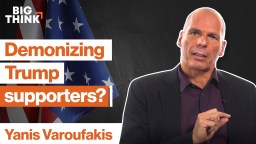JONAH BERGER: Often when we think about changing someone's mind, whether it's in our personal lives or professional lives, we think the answer is pushing. If it's trying to change our spouse's mind, we think about listing more reasons. We think about changing the boss's mind, we think about making one more PowerPoint presentation. And it's clear why we think that'll work. If you think about the physical world, take a chair for example, and we think about moving a chair, pushing is often a great way to get a chair to go.
But when it comes to applying that same intuition to people there's a challenge, which is, when we push chairs, chairs go. When we push people they don't necessarily go, they often push back. Often, you know, we push, and we prod, and we add more reasons, or more facts, or more figures, and nothing happens. Change is really hard. And so, if pushing isn't the answer, well, well what is?
And it turns out there's this interesting analogy in chemistry. Chemical change is really hard. It often takes thousands if not millions of years for carbon to turn into diamonds, and plant matter to turn into oil. And so chemists often add temperature and pressure to make change happen faster. But it turns out, there's a special set of substances chemists often use to make change happen faster and easier. These substances are called catalysts. And what catalysts neatly do, in the chemical world, is they make change happen faster with less energy. They reduce, essentially, the barrier to change.
And in the social world, we tend to think about catalysts as just people that catalyze change, that cause change to happen. But really, in this book, I'm borrowing on that same notion from chemistry. Too often we think change is about pushing. We think if we just come up with one more way people will eventually come around. Rarely though, do we take a step back and say, "Well, hold on, why hasn't that person changed already? What's stopping them? What's the thing getting in the way—that barrier or that obstacle that's getting in the way—and how can I mitigate it?"
I've talked to everyone, from startup founders, and people who changed their boss's mind, to folks that got their kids to do what they wanted their kids to do, or change their spouse's behavior. But also more interesting types of individuals that changed things in the almost most difficult of circumstances. I talked to people that have gotten folks to come from one political side to the other. I've talked to hostage negotiators that got people to come out with their hands up. And I've talked to people like substance abuse counselors, who've gotten people to quit even when quitting hadn't worked in the past.
Again and again, I saw the same five barriers come up, and so I put them in the framework: reactants, endowment, distance, uncertainty, and corroborating evidence, together spell the word reduce, which is exactly what great catalysts do. The basic idea of reactants is when we push people, they push back, they don't just go along with what we want them to do, they push back. And so, we need to figure out how to reduce that by giving them freedom and autonomy.
Endowment. The basic idea there is we tend to be attached to the status quo. We tend to do what we've done already because it feels safe, because we know it, and we become attached to it. And so the challenge there is how do we highlight that doing nothing isn't as safe or as costless as people might think?
D, for distance. There, the challenge is often we ask for too much, and when we ask for too much, people aren't even willing to consider what we're asking for. And so we need to shrink distance and start with smaller asks, and then ask for more.
Uncertainty. There, it's just that new things are often uncertain, whether it's a new product, a new service, new idea. That's always scary. And people don't want to move from a safe thing to a scary one. And so, how we can alleviate uncertainty, make people feel more comfortable with change that's often scary.
And then last but not least, corroborating evidence is about providing more proof. Particularly for big change, we need more evidence or more proof that it's gonna be good for us. And so there, it's about bringing together multiple sources of influence to change minds and drive action.
The principles vary across situations, right? You know, sometimes the barrier is reactants, and other times it's uncertainty, sometimes it's endowment, and sometimes it's more about distance. But it's not more about, you know, products and services versus personal change; the same things come up all the time. So if you're a boss of a small organization, people still have reactants. Same if you're part of a large organization and talking to a client. The barriers are often quite similar. It's more about how we apply barrier removal, the specific strategies we might use to do so, but the concepts are very much the same.
And that's exactly what great catalysts do. They don't push harder, they don't add more temperature or more pressure. They figure out what the barriers are to change and they mitigate them.






